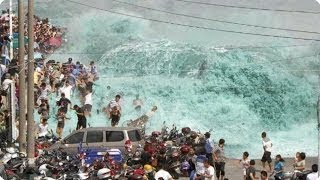















Где искать: по сайтам Запорожской области, статьи, видео ролики
пример: покупка автомобиля в Запорожье
Unbelievable Natural Disasters Caught on Tape
During a thunderstorm, the rising wind carries water droplets into the atmosphere. When the air is cold enough, these droplets freeze.
As moisture from the air collects on the outside of the frozen droplets, they become larger. The stone will continue to grow until the updraft that holds it can no longer support it.
If there is a lot of moisture in the air, and the wind that traps it is very strong, then the hail will be larger.
Research shows that climate change could make giant hailstones more common.
Apocalyptic hail the size of a tennis ball hit parts of Belgium, smashing car windows and injuring dozens of people.
Unfortunately, a 20-month-old child was killed by a falling stone.
Climate change makes these conditions more likely because warmer air contains more water vapor. Strong storms with powerful updrafts are also becoming more likely as weather patterns change.
Although the “melting point” — the height at which hail begins to melt before hitting the ground — will rise as the ground warms, that won’t stop giant hail. While small stones melt as rain, large stones fall faster, so they do not always melt before reaching the ground.
“As a result of anthropogenic warming, low humidity and convective instability [the ability of an air mass to resist vertical movement] are generally expected to increase, increasing the likelihood of hail and favoring the formation of larger hailstones


 У вашего броузера проблема в совместимости с HTML5
У вашего броузера проблема в совместимости с HTML5


